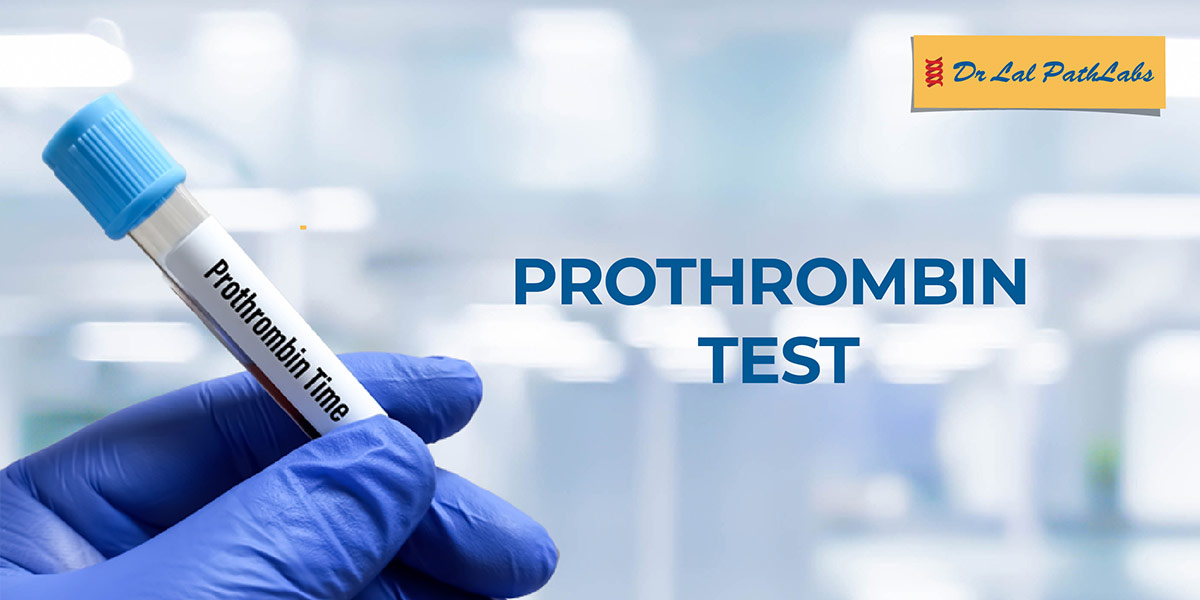Prothrombin Time (PT) Test – Purpose, Procedure and Results
What is Prothrombin Time (PT) test?
Prothrombin Time test, also known as PT test or Pro-time test, is used to evaluate blood clotting.
Prothrombin is a protein produced by the liver and one of the several substances known as clotting (coagulation) factors.

In the body, whenever there is an injury and bleeding, a chain of chemical reactions occurs in which clotting (coagulation) factors are activated one after another and result in the formation of a clot.
Each coagulation factor must be sufficient and function correctly for normal clotting to occur.
What does the Prothrombin Time (PT) test measure?
The Prothrombin Time test measures the time it takes for the blood to clot.
It helps evaluate the body’s ability to form blood clots appropriately.
High levels of the test results indicate it takes more time than usual for the body to form clots.
When is the Prothrombin Time (PT) test recommended?
The Prothrombin Time test is most commonly used to:
- Monitor the levels when a patient is on a blood-thinning medicine called Warfarin. Warfarin may be prescribed for disorders such as deep vein thrombosis (DVT), atrial fibrillation, pulmonary embolism (PE), or antiphospholipid syndrome.
- Diagnose the cause of abnormal bleeding or bruising
- Diagnose liver disease
- Look for signs of a blood clotting or bleeding disorder
- Before surgery, if there is a concern about the body’s ability to clot
What are the symptoms of a clotting or bleeding disorder?
The symptoms of a clotting or bleeding disorder may include the following:
- Easy bruising
- Heavy menstrual periods
- Blood in the urine
- Swollen or painful joints
- Nosebleeds
- Unexplained heavy bleeding
- Leg pain or tenderness
- Leg swelling
- Red streaks on the legs
- Sudden shortness of breath
- Cough
- Sharp chest pain
- Rapid heartbeat
How is the Prothrombin Time (PT) test performed?
A blood sample will be drawn from a vein in the arm by a healthcare expert.
No special preparations are required for the Prothrombin Time test, though your doctor may instruct you if any specific preparations are needed.
What are the risks of the Prothrombin Time Studies test?
The Prothrombin Time test is a safe, standard test with very minimal risks involved, such as
- Bleeding
- Bruising
- Lightheadedness
- Infection
What the results may indicate?
The Prothrombin Time test results are presented in two ways:
- Seconds: It represents the time taken in seconds for the blood to clot.
- International Normalised Ratio (INR): INR levels are often used as they make comparing results from different labs and test methods easier. If the INR is higher above the ideal range, the blood clots more slowly than wanted, while a lower INR indicates that the blood clots more quickly than desired.
The longer than normal Prothrombin Time test results can be due to:
- Low level of blood clotting factors (factors I, II, V, VII, or X)
- Lack of vitamin K
- Liver disease
- Disseminated intravascular coagulation (DIC).
- Treatment with blood-thinning medicines, e.g., warfarin or, in rare cases, heparin.
Disclaimer:
This blog is for informational purposes only and should not be construed as advice or as a substitute for consulting a physician. It is not a substitute for medical advice or treatment from a healthcare professional.













